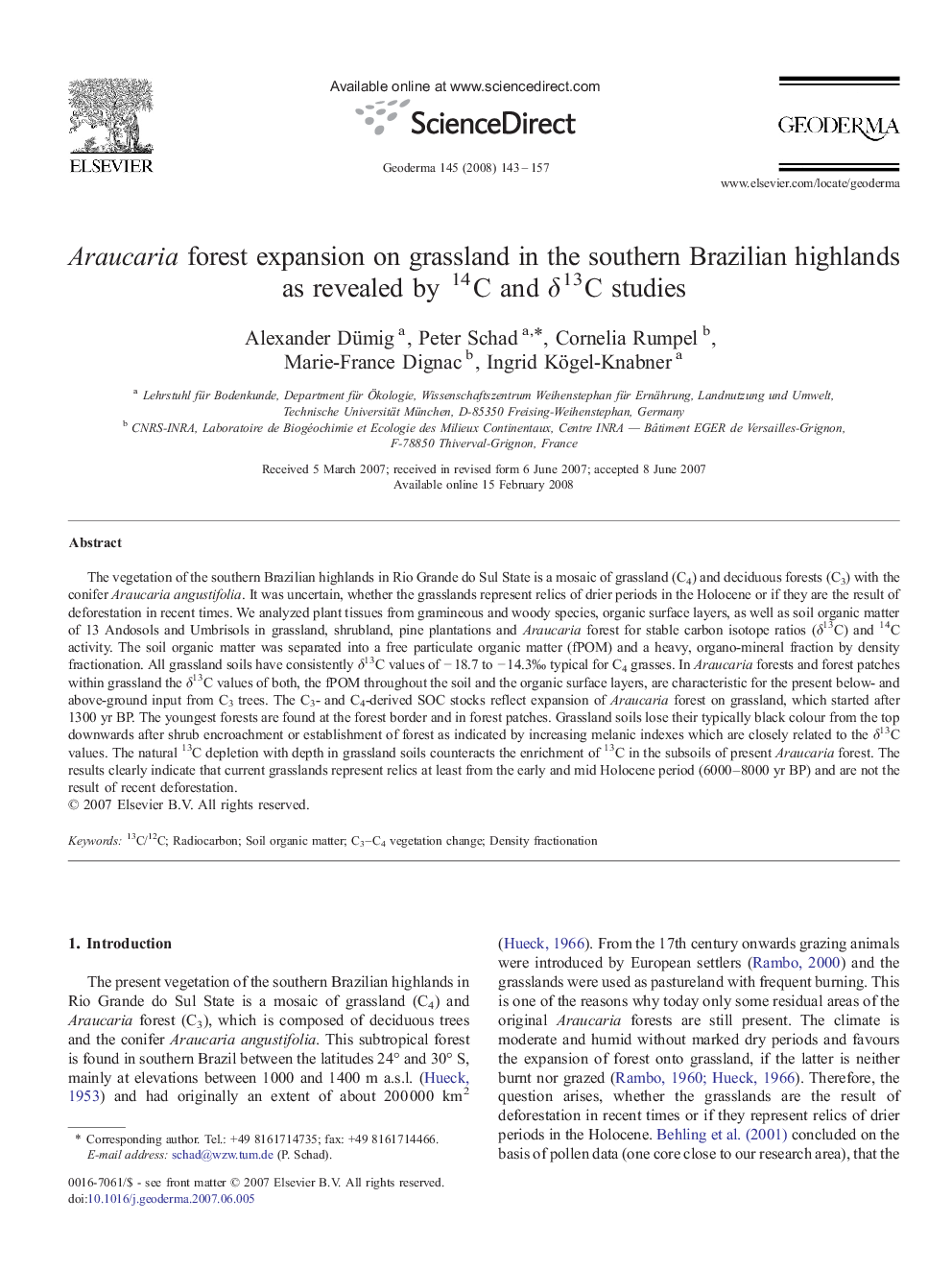| Article ID | Journal | Published Year | Pages | File Type |
|---|---|---|---|---|
| 4575152 | Geoderma | 2008 | 15 Pages |
The vegetation of the southern Brazilian highlands in Rio Grande do Sul State is a mosaic of grassland (C4) and deciduous forests (C3) with the conifer Araucaria angustifolia. It was uncertain, whether the grasslands represent relics of drier periods in the Holocene or if they are the result of deforestation in recent times. We analyzed plant tissues from gramineous and woody species, organic surface layers, as well as soil organic matter of 13 Andosols and Umbrisols in grassland, shrubland, pine plantations and Araucaria forest for stable carbon isotope ratios (δ13C) and 14C activity. The soil organic matter was separated into a free particulate organic matter (fPOM) and a heavy, organo-mineral fraction by density fractionation. All grassland soils have consistently δ13C values of − 18.7 to − 14.3‰ typical for C4 grasses. In Araucaria forests and forest patches within grassland the δ13C values of both, the fPOM throughout the soil and the organic surface layers, are characteristic for the present below- and above-ground input from C3 trees. The C3- and C4-derived SOC stocks reflect expansion of Araucaria forest on grassland, which started after 1300 yr BP. The youngest forests are found at the forest border and in forest patches. Grassland soils lose their typically black colour from the top downwards after shrub encroachment or establishment of forest as indicated by increasing melanic indexes which are closely related to the δ13C values. The natural 13C depletion with depth in grassland soils counteracts the enrichment of 13C in the subsoils of present Araucaria forest. The results clearly indicate that current grasslands represent relics at least from the early and mid Holocene period (6000–8000 yr BP) and are not the result of recent deforestation.
